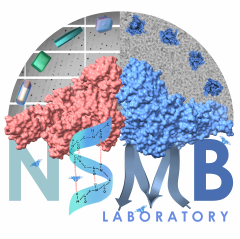Life shows its spectacular colours in its myriad diversity, yet life shares certain fundamental common elements like proteins, DNA etc. Students and researchers can build upon knowledge gained from observations in simple models to study even more complex problems.
Transcription is a complex process. It is regulated at various stages by several important proteins that interact with the DNA or RNA Polymerase (RNAP)the key enzyme/protein in transcription. Key to this regulation are RNAP and regulatory protein complexes. Malfunction of these complexes is frequently implicated in diseases such as cancer, autoimmune disease, cardio vascular disease, diabetes, infectious disease etc. In order to understand the basis of these malfunctions, we have to study these macromolecules and the interacting partners at the molecular level. By studying their structure at the molecular level, we will be able to gain knowledge about their interaction and the mechanism that leads to their function or malfunction. Structural biology methods are excellent tools to accurately understand the structural information that will define the interactions and functional mechanisms of their component protein or their subunits. Single particle cryo electron microscopy and Protein crystallography along with other biophysical techniques are excellent tools to study these molecular machines the proteins. By combining structural information of different functional states, together with other biochemical and/or biophysical data, we aim to get a detailed snap-shot of the function of these proteins during its functional state, that will reveal their intricate mechanisms.
Our lab is currently focusing on structural studies of protein complexes involved in Mycobacterium tuberculosis and DNA damage repair in both prokaryotes and eukaryotes. The RNAP, the central player in transcription is an important target for novel antibiotics. We aim to fully understand the mechanisms by which transcription is regulated.
Our lab aims to study the individual and complex multi-protein (protein-protein, protein-non native protein etc.) , protein-ligand (protein-inhibitor, protein-DNA etc.) interactions by tackling the individual problems and assembling them to get a broader view.
Towards this we use two principle techniques viz., Protein Crystallography(PX) and Cryo Electron microscopy(CryoEM) along with bioinformatics and range of other biophysical (DLS, MALS, CD, ITC, SPR, Fluorescence Spectroscopy), biochemical and molecular biology techniques.
Research in our laboratory focuses on the molecular level understanding of life processes. In particular, we work on Structural Molecular Biology to understand the fascinating microscopic world within us. We use Molecular Biology, Biochemistry, Structural Biology and Bioinformatics approaches to understand the biology and chemistry within cell. We use mainly protein Crystallography and Single Particle CryoEM along with other biophysical techniques like DLS, MALS, ITC, Fluorescence Spectroscopy, SPR etc. to understand Structural Biology aspects macromolecules and macromolecular complexes of life.
Masters students with prior knowledge and/or experience in molecular biology, biochemistry, structural biology, computational biology, programming and/or bioinformatics are particularly encouraged to apply for a PhD position in our lab.
